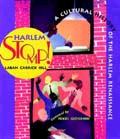AN AUTHENTIC SECOND HARLEM RENAISSANCE

With the Seemingly overnight popularity of black authors during the 1990s, many speculated that African America was well on its way toward a second Harlem Renaissance. In fact, the boom in modern computer and media technology allowed writers like Alice Walker, Toni Morrison, Maya Angelou, and Terry McMillan to enjoy a level of “crossover” appeal that far surpassed that of any Harlem Renaissance authors.
Also in the 1990s, the popular author E. Lynn Harris launched his phenomenally successful career and helped pioneer the current trend in self-publishing by doing exactly that. His self-published first novel, Invisible Life, set the stage for a whole series of Harris’ novels that featured the same characters, a form known in literary geekology as a roman-fleuve.
The publication of books by black authors during the Harlem Renaissance made history because until that time major publishing houses had been largely closed to black authors and African Americans were generally not encouraged to assert themselves as intellectually creative thinkers. As we approach 2006, the technology of self-publishing has not only empowered more black writers to break into print but in many ways has changed the nature of the traditional publishing industry itself.
The substantial number of African-American writers either publishing their own works, or doing so through African-American imprints created by traditional publishing houses, is unquestionably historically noteworthy. But does it constitute a second Harlem Renaissance? No. It comprises something fully deserving of extended research, documentation, and analyses. In truth, in regard to this aspect of contemporary African-American literature, we are looking at nothing less than a full-blown modern cultural revolution.
This does not, however, mean that we are not in the midst of a second Harlem Renaissance as well because we are. This second Harlem Renaissance, however, is not defined by the number of black writers publishing books. It is defined by the number of Harlem Renaissance related works that have been published over the past decade, and/or, are scheduled for future publication. Aside from books such as my own ENCYCLOPEDIA OF THE HARLEM RENAISSANCE (with Sandra L. West), Craig Cable’s EBONY RISING, and Laban C. Hill and Christopher Myers’ HARLEM STOMP!, a growing number of literary festivals and stage productions have also been dedicated to recognizing the movement.
In October 2005 alone, some half dozen titles on the Harlem Renaissance will hit the market. Among them are: Lois Brown’s ENCYCLOPEDIA OF THE HARLEM LITERARY RENAISSANCE: Jeffrey B. Ferguson's biography of George Schuyler, SAGE OF SUGAR HILL; and Joyce Moore Turner and W. Burghardt Turner’s CARIBBEAN CRUSADES AND THE HARLEM RENAISSANCE. It is because of this veritable explosion of scholarship, general popular interest, and enduring cultural appeal that the Second Harlem Renaissance is very much in full swing.
by Aberjhani
Co-author of ENCYCLOPEDIA OF THE HARLEM RENAISSANCE
And author of I MADE MY BOY OUT OF POETRY

Comments
A reminder, as though you don't have enough going on already, next month is National Novel Month and the challenge is to write a novel in a month. Haha. Didn't you just finish one of those?
http://www.nanowrimo.org